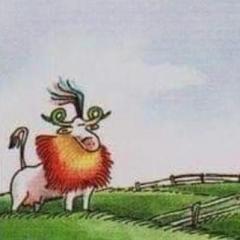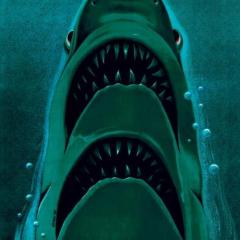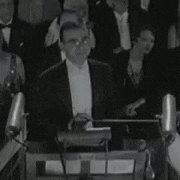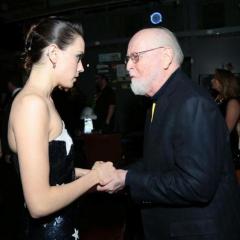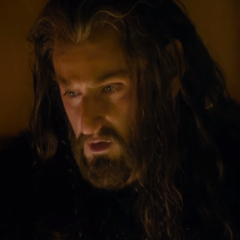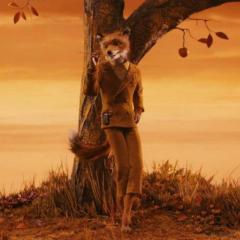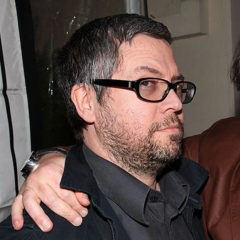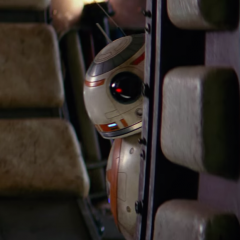Search the Community
Showing results for 'dies irae'.
-
It's the Dies Irae from Verdi's Requiem.
-
I've only just caught up with the latest two episodes. I find it interesting that the day after the reveal that Dolores put herself into multiple host bodies, Dilbert ran this arc: https://dilbert.com/strip/2020-04-06 The "Shining theme"? It's the Dies irae, and I assume it was used for the last part of Caleb's trip because it's also the basis for the last movement of Berlioz Symphonie fantastique - which is a musical depiction of a series of drug induced hallucinations.
-

Star Wars A New Hope 2-LP Walt Disney Records
Holko replied to The Dark Trilogy's topic in JOHN WILLIAMS
Parts of the demaster like the Dies Irae after the hologram (I think) sound a lot better on the demaster... on the other hand TIE Fighter attack sounds a lot less lively than on the SE, flat and punchless. -
Revenge of the Sith anyone else's favorite SW score?
_deleted_ replied to Gruesome Son of a Bitch's topic in JOHN WILLIAMS
@Falstaft (hiatus til TROS) I grew up with the prequels. ATS left such an impression on me that whenever I hear music from a John Williams score that has similar progressions or allusions to Dies Irae, my brain goes crazy and screams ATS. But I'll elaborate tomorrow after I get some sleep and hopefully my answer would satisfying. -
Thanks very much for the kind words and encouragement from both yourself and @Cerebral Cortex! I was speculating if this would be worth the effort, and I decided that the score is very thematically rich and enough people care about it that an analysis could prove interesting/helpful to listeners. The travelling motif is quite an neat little theme. We don't hear it so much in later episodes, but it's one of the last things we hear in Season One, a very emotionally climactic final rendition. It's quite prominent in different environments at least once in each of the first three episodes, the first being more subdued, the second having some major Vangelis vibes, and the third really sounding like Kylo Ren's theme. In response to note no. 1, that is a fair assessment so I'll change that today and double back on the other statements to make sure I'm consistent. In response to note no. 2, those recurring synth moments are what I'd call disputed territory because they certainly appear a lot but they don't really have any solid foundational grounds to be themes or motifs. I'd consider noting the first one you mentioned, but the rhythm in Back for Beskar already plays under two other themes in that instance (!) so it can get kind of messy when looking for it. In part I'm also hesitant because it's just one more thing to listen for LOL. In response to note no. 3, I recalled hearing that in another episode but I couldn't remember which one or if it made it to the mini OST so I didn't jump on it just yet. When I get to it I will make a small note of it, but again it's not really a theme or motif, it's just a recurring idea. Super cool part though- well spotted in the episode and a neat texture to it. Also, I'd almost forgotten about the Dies Irae in Bounty Droid.
-
A Thematic Breakdown of: THE MANDALORIAN: SEASON ONE Music composed by Ludwig Goransson Part 1 of 4 Themes in Chapters 1 & 2 (in order of appearance) Recorder Riff (original presentation) "Western" Motif "Travelling" Motif The Client * Mando Utility Motif (recently discovered) * Dramatic Utility Motif (previously known as Mando Culture) "Forge" Motif Recorder Riff (skeletal presentation) Chime Motif Dies Irae (traditional) The Child Razor Crest Jawa Motif * - utility refers to the fact that Goransson uses the theme(s) whenever he needs to without leitmotific significance CHAPTER 1 1. Hey Mando! (2:14) 0:00 Recorder Riff 0:23 Recorder Riff (increasing distortion) 1:42 Western Motif (piano w/ distorted guitar) 1:48 Western Motif (piano w/ interlude) 1:55 Western Motif (piano) 2:01 Western Motif (piano) 2. Face to Face (5:13) 0:00 Travelling Motif 0:42 Recorder Riff (variation) 1:06 Travelling Motif Recorder Riff (variation) 2:45 The Client 3:22 Recorder Riff (variation) 3. Back for Beskar (2:26) 0:00 Western Motif (piano) 0:07 Western Motif (piano) 0:15 Western Motif (piano) 0:23 Western Motif (piano) 0:32 Mando Utility Theme (high strings) 0:46 Dramatic Utility Theme Mando Utility Theme (high strings) 1:02 Dramatic Utility Theme Mando Utility Theme 1:16 Dramatic Utility Theme Mando Utility Theme 1:55 Mando Utility Theme 4. HammerTime (2:18) 0:15 Forge Motif 0:27 Forge Motif 0:46 Recorder Riff (orchestral variation) 1:18 Forge Motif 5. Blurg Attack (1:26) 0:17 Recorder Riff (skeletal variation) 0:29 Recorder Riff (skeletal variation) 0:57 Chime Motif Recorder Riff (skeletal variation) 1:05 Fanfare 6. You Are a Mandalorian (3:56) 0:34 Recorder Riff (skeletal variation) 0:46 Recorder Riff 1:56 Recorder Riff (skeletal variation) 2:11 Fanfare 2:42 Recorder Riff 2:53 Recorder Riff (skeletal variation) 3:04 Recorder Riff (skeletal variation) 3:26 Recorder Riff (skeletal variation) 3:37 Recorder Riff (skeletal variation) 7. Bounty Droid (3:03) 1:23-1:55 Dies Irae (traditional) 8. The Asset (1:36) 0:55 The Child 1:23 Recorder Riff 9. The Mandalorian (3:19) 0:00 Recorder Riff 0:23 Recorder Riff (increasing distortion) 0:46 Western Motif (piano w/ distorted guitar) 0:52 Western Motif (piano) 0:58 Western Motif (piano w/ interlude) 1:04 Western Motif (piano w/ interlude) 1:09 Western Motif (piano w/ interlude) Fanfare 1:15 Western Motif (piano w/ interlude) 1:21 Western Motif (piano w/ interlude) 1:26 Recorder Riff Western Motif (triangle [?] w/ interlude) 1:32 Recorder Riff Western Motif (triangle [?] w/ interlude) 1:39 Fanfare Western Motif (triangle [?] w/ interlude) 1:44 Western Motif (triangle [?] w/ interlude) 1:50 Western Motif (triangle [?] w/ interlude) 2:09 Razor Crest 2:20 Razor Crest 2:33 Recorder Riff Western Motif (interlude) 2:38 Recorder Riff Western Motif (triangle [?] w/ interlude) 2:45 Recorder Riff (skeletal variation) Western Motif (triangle [?] w/ interlude) 2:51 Recorder Riff (skeletal variation) 2:56 Chime Motif CHAPTER 2: THE CHILD 1. Walking on Mud (1:39) 0:15 Recorder Riff 0:45 Recorder Riff (increasing distortion) 1:18 Western Motif (piano w/ distorted guitar) 1:23 Western Motif (piano) 2. Jawas Attack (3:47) 0:00 Jawa Motif (underlying rhythm) 0:03 Travelling Motif 0:20 Travelling Motif 0:32 Jawa Motif (underlying rhythm) 0:40 Jawa Motif (underlying rhythm) 0:47 Jawa Motif (underlying rhythm) 0:54 Jawa Motif (underlying rhythm) 0:58 Jawa Motif (underlying rhythm) 1:12 Jawa Motif 1:20 Jawa Motif 1:27 Jawa Motif 1:34 Jawa Motif 1:39 Jawa Motif (underlying rhythm) 1:53 Jawa Motif 2:01 Jawa Motif 2:08 Jawa Motif 2:22 Jawa Motif (underlying rhythm) 3:12 Jawa Motif 3:20 Jawa Motif 3:35 Jawa Motif (underlying rhythm) 3. Trashed Crest (2:19) 0:06 Recorder Riff 0:38 Fanfare (variation) 1:24 Recorder Riff (skeletal variation) 1:34 Fanfare 2:03 Recorder Riff 4. To the Jawas (1:36) 0:00 Chime Motif 0:12 Recorder Riff 0:21 Fanfare 0:37 Jawa Motif 0:48 Jawa Motif 0:54 Recorder Riff (skeletal variation) 0:56 Recorder Riff (skeletal variation) Western Motif (interlude) 1:02 Recorder Riff (skeletal variation) Western Motif (interlude) 1:08 Recorder Riff 1:19 Recorder Riff 5. The Egg (2:55) 0:00 Jawa Motif (underlying rhythm) 0:17 Jawa Motif (underlying rhythm) 0:26 Jawa Motif 0:34 Jawa Motif 0:40 Jawa Motif (underlying rhythm) 1:00 Recorder Riff 1:17 Recorder Riff 2:22 (see 4:30 The Hangar - Chapter 5, 2:16 Nice Family & 2:05 Mando's Back - Chapter 6) 6. The Mudhorn (3:01) 2:11 The Child 2:34 Recorder Riff 7. Celebration (3:32) 0:01 Mando Utility Theme (orchestral) 0:13 Mando Utility Theme (orchestral) 0:23 Jawa Motif (underlying rhythm) 0:30 Jawa Motif (underlying rhythm) 0:49 Jawa Motif 1:09 Recorder Riff (skeletal variation) 1:14 Recorder Riff (skeletal variation) 1:23 Fanfare 2:07 Jawa Motif (underlying rhythm) (percussion) 2:23 Recorder Riff 2:48 Fanfare 8. The Next Journey (2:36) 0:00 Recorder Riff (skeletal variation) 0:12 Recorder Riff (skeletal variation) 0:23 Recorder Riff (skeletal variation) 0:35 Western Motif (piano) 0:44 Western Motif (piano w/ interlude) 0:49 Western Motif (piano w/ interlude) 0:55 Western Motif (piano) 1:01 Fanfare 1:22 Razor Crest 1:33 Razor Crest 1:47 Recorder Riff (variation) 1:58 Chime Motif 2:14 Recorder Riff (skeletal variation) I'm working on Part 2 (Chapters 3,4) as you read this. Any cross-referencing would be great as I am only one person and could've easily missed or misinterpreted the music at times. It takes a good deal of time, but it has been a lot of fun revisiting the albums in order so I'm happy to do it.
-
It's a new theme derived from another theme. Like Anakin's theme. Funny thing about Rey's Theme is that, whether Williams intended any of this as such, every single musical connection and/or theory that appeared over the past four years in regards to this theme is valid. All the connections to Dies Irae, the devil's tritone, Force theme, Kylo Ren, Palpatine... all of these hold water. This is either the biggest set of coincidences in the history of film scoring or an absolute stroke of genius. Karol
-
A lot of LOTR feels pop-y and simple to me compared to the harmonic and instrumental language of Williams. Whenever I return to it, I get enough of it after a short while. Also, there are plenty of tracks within LOTR music that I am either terminally bored by, or cannot stand. This just doesn't happen with Williams' evergreen music, like it does not happen with Beethoven, or Bruckner, or Mahler. As for what is more moving, I am moved more by music itself than any textual / visual dramatic context, so the superior melodist Williams wins. Shore's Tri-Score is the next best thing in film music history, and there are probably hundreds of little things to enjoy about it, but cmon, taking down Star Wars? Star Wars is film music history. I disagree about LOTR having more diversity than it. Superficially---with the likes of the hardanger fiddle, and Moroccan music---maybe. But Star Wars visits Stravinsky, Korngold, R. Strauss, Bruckner, Mahler, Tchaikovsky, Holst, Herrmann, Goldsmith, Hindemith, Prokofiev, Shostakovich, Schoenberg, Verdi, Wagner, RVW, Walton, Rózsa, Waxman, Newman, Steiner, and perhaps even, like a boomerang, some of the music that it inspired in the first place (JNH, T. Newman, Goldsmith), as well as Big Band music, baroque music, and has it's share of musical artifacts of the like of Dies Irae, or the BACH motif recently... countless, countless generations of music sound through Star Wars. The list is much longer than in Shore's case, even though he, too, can boast some of these same influences. As vehicles of onscreen drama, Star Wars wins again, although not by such a far margin this time. Shore's work is a work of a musically lesser, but perhaps more calculating composer. It's more even and better structured in aiming for an emotional effect, whereas Williams is more of a creative genius working scene by scene. A lot of what Shore does is what you and I would have planned if tasked to compose something dramatically great. Williams?---bonkers! To get into the obvious differences between assignments given to them would be a pointless detour, so I spare my and your time and omit it. Williams simply has enough of a musical edge to sometimes make quite puzzling choices, and still come out on top.
-
The Rise of Skywalker The Rise of Skywalker OST Album Discussion
aviazn replied to Jay's topic in JOHN WILLIAMS
The Rise of Skywalker really does sound like a major key version of the Dies Irae (the extended phrase, not just the first four notes). It's like the Anakin's Theme version of the Dies Irae. -

The Rise of Skywalker The Rise of Skywalker OST Album Discussion
The Five Tones replied to Jay's topic in JOHN WILLIAMS
Oh, that IS awesome... the jittery Dies Irae in retrograde/palindromic pattern. Those withering string effects that accompany the Emperor's theme at 3:42 in Fanfare and Prologue are bawse. -
No. Right there the top line of the brass is E - D-sharp - G-flat - F; first four notes of the Dies Irae starting on the E would be E - D-sharp - E - C-sharp. However, the actual four notes played are a transposition of the B-A-C-H motif. It's always possible JW put that in there as some kind of cryptogram*, but without context of the entire score hard to say. Could just be depicting something rising or being force lifted. *Has he used cryptograms, existing or otherwise, before?
-
Wonder Woman (2017) Not half bad! It has its flaws, but it's a welcome relief coming from DC. Checks off pretty much all the boxes for superhero success (save maybe for a good villain, but David Thewlis is much too loveable to scapegoat). 3 / 5 Guy and Madeline on a Park Bench (2010) I'm going to be nice because a) I only watched this for the sake of studying Chazelle's career and b) it's still a student film. Chazelle's first roots are visible, if subtle, and considering his next feature film was Whiplash he clearly filled in some gaps. It's a little incoherent at times, and I'm not sure I "got" the idea to go with black and white. Still some genuine streaks of genius (subway scene, musician/dancer back-and-forth shots, one of two terrific musical numbers). At the end of the day it's pretty much like the La La Land concept before they had the money. 2 / 5 (again, I'm nice) Close Encounters of the Third Kind (Theatrical Cut) (1977) I love this movie more with every viewing. My favourite scene is probably Roy's first encounter in the pickup truck. It's just so well done, what with the lighting and the effects of the floating papers! Plenty of lines to enjoy as well ("Could you tell me where cornbread is? TURKEY!", "Dad, after this can we through dirt in to my window?", and such). Richard Dreyfuss is great. Obviously a masterclass in film scoring on Williams part, rocketing the Five Tones into the most prolific realms of soundtrack history. What's more is that this score has so many other sides to it- the magical, the uncertain, the fugal and pulsing Dies Irae, and the downright scary (see Barry's Abduction, another fantastic scene!). A true Spielbergian masterpiece as far as I'm concerned. 5 / 5
-

What Is The Last Score You Listened To? (older scores)
publicist replied to Ollie's topic in General Discussion
With so many tracks it's a bit sketchy but Terence Blanchard's musical integrity is always in place. It's like one of those 90's Tom Newman americana scores 'a la 'Shawshank' or 'Green Mile', though sadly more muted thematically. Great orchestrations. 90 minutes of which only the old Dies Irae quote stand out, the rest amounts to static mood mongering that hardly moves, a few abstract geräusch collages excepted. But hey, at least you can't claim they're skimpy. -

What Is The Last Score You Listened To? (older scores)
redishere replied to Ollie's topic in General Discussion
-
The Beethoven example does not really fit. In that numerical notation, it would be 555 3 444 2 (it's in C minor, and starts on the note G, which is the 5th note of the scale). So, the Beethoven example has nothing to do with the Dies Irae, except that they are both in a minor key. In my opinion, there is indeed a similarity between the Shore example and the Dies Irae, which is partially due to a similar rhythm (just in the beginning, then the Dies Irae melody goes on quite differently), and partially due to the modal melody (in both cases, in D minor). However, it's definitely not a "quote", and it's the kind of similarity that can happen by chance, or by a kind of subconscious choice by the composer. If Shore said that it was not done intentionally, I surely believe him (not that there would be anything wrong otherwise). Another interesting example that might recall of the Dies Irae, because of the rhythm and, again, a modal melody in D minor, is from Mike Oldfield's instrumental piece "Tubular Bells", at 6:56 in this video:
-

What Is The Last Score You Listened To? (older scores)
Edmilson replied to Ollie's topic in General Discussion
Star Wars - Episode II: Attack of the Clones (complete score) I was scrolling to a bit of Prequel Memes last night (it's amazing that just about every line in every scene of these movies are memeable), and decided to revist this. And I really like it! I love the warm and romantic material for Anakin and Padme's romance, the fun and exciting action music (specially The Jango Fett Fight and the original On The Conveyor Belt), the almost Herrmann-esque motif for harp illustrating Anakin's slow descent into madness from The Arrival at Tatooine, the use of Dies Irae on the haunting and dark Anakin Changes, the badassery of Entrance of the Monsters and, of course, the Finale and End Credits. I love how the score (as Williams recorded it, not the stupid changes Lucas and his music editors did) ending with a very somber and menacing Imperial March. I consider AOTC a close cousin of Williams' first two Potter scores, and as a fan of his late 90s/early 2000s phase, I really have a soft spot for this score, much better than the idiotic movie it was written for. -
I don't think it has to be intentional. I hear Dies Irae loud and clear. And as Shark has noted, I think Shore was well aware enough, especially considering he was practically composing an opera to picture, of Dies Irae and it's connotations of death, doom and demise.
-
When you have a musical idea as short and simple as the Dies Irae "stinger", it gets very hard to tell when a composer intentionally references the Dies Irae, or when - is his attempt to evoke similar ideas of impending doom - has just stumbled upon a similar (or indeed the same) couple of notes. Its the equivalent of a generic piece of dialogue in a script. Characters exclaim, for instance, "no!" in many films, but you'd hardly call it a reference. Its just a generic piece of language. There's no intentionality there. I seem to recall Shore (or was it Adams?) who said that the scores contain no intentional quotes of the Dies Irae.
-
Cool video! I never noticed until now that the “descending thirds” Nazgul motif was actually a variation of Dies Irae.
-
http://www.jwfan.com/forums/index.php?/search/&q=dies irae&page=2&search_and_or=and&sortby=relevancy The many uses of Dies Irae on JWFan
-
Oh wow! Probably the most soft and beautiful rendition of Dies irae I've heard haha
-
Trying to avoid the trailer but always like hearing the music. Seems like this might be a quality upload of the music only? https://www.youtube.com/watch?v=t1neOF-mYgk As for the end bit, Dies Irae vs. Kylo's theme, it might technically be Dies Irae but the way it starts out is clearly meant to evoke Kylo's theme. Certainly the same kind of instrumentation you always hear. Not that it matters of course. Anyone reading into that is wasting their time. Highly doubtful the people making the trailer know all that much more about the movie than anyone else does, and they definitely have no idea what JW's score will sound like. Have they even started recording yet?
-
The Rise of Skywalker Star Wars IX The Rise Of Skywalker TEASER MUSIC discussion
TownerFan replied to Jay's topic in JOHN WILLIAMS
I am a bit baffled by the amount of over-analysis about this new trailer music piece I read online. I mean, it's always great to see fans getting excited about new Star Wars music and trying to tie up things in musical terms (especially @Falstaft always insightful analysis). But in all honesty, I don't think this simple piece of music for an advertising item is worth such a torrent of words and thoughts, especially because this isn't composed by JW himself. I can certainly agree that it's a well-executed piece of music that succeeds in doing what a trailer should always do--getting people excited for the film itself. I honestly don't know if anything we're hearing in this piece is foreshadowing JW's actual music score we'll hear in TROS, nor any kind of plot reveal (all the talk about the link to the Dies Irae is fun, but imho a tad too stretched for this purpose).



